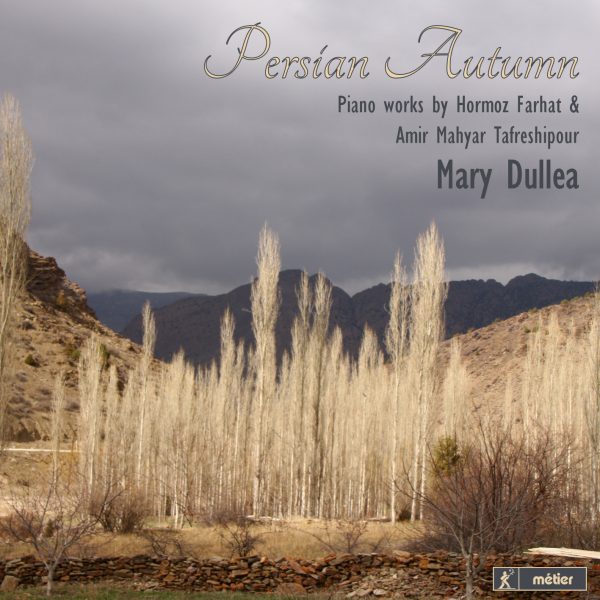Infodad
The pieces played by Mary Dullea, by Hormoz Farhat (born 1928) and Amir Mahyar Tafreshipour (born 1974), are notable not so much for their respective time periods as for their composers’ geographical provenance: Farhat and Tafreshipour are Iranian, although their half-century separation in age means they know their homeland in very different ways. Farhat, the first Iranian to study music in the United States, is first represented here by his 1952 Toccata, based on a Persian folk song and constructed with skill of a rather old-fashioned sort. Piano Sonata No. 1 dates from the mid-1950s and shows the influence of Lukas Foss, with whom Farhat studied at the time and to whom the work is dedicated. This is a four-movement piece, but a compressed rather than expansive one. It is gestural rather than emotive, even in the second-movement Adagio con finezza. Farhat here seems comfortable with standard mid-20th-century compositional techniques: the work is less backward-looking than the Toccata but is very much of its time, as is shown through frequent metrical and rhythmic changes and extremes of dynamics. The three-movement Piano Sonata No. 2 is much more recent, dating to 2007; is considerably longer (23 minutes vs. 13); and is a good deal more impressive musically. Farhat here does not feel obliged to stick rigidly to techniques of the 21st century, or even the 20th, instead allowing the music to flow more naturally and in a less-forced way than in the earlier sonata. The first movement, itself almost as long as the entire previous sonata, is dynamic, expressive and emotionally convincing without ever being particularly lyrical – this is no neo-Romantic work, but one that insists on coming across in its own version of contemporary musical language. The slow second movement begins with delicacy and develops into increasing complexity, while the Molto animato finale is bright, forthright and seems always on the verge of ebullience without ever quite indulging in it: its final portion becomes quietly expressive and fades away quite effectively. Mary Dullea catches all the moods of this variegated work very well indeed, also doing a fine job with Farhat’s other music and, for that matter, with the four very different works by Tafreshipour. The first of those, Yasna, portrays a Zoroastrian religious ceremony with delicacy and refinement, but it makes its points early and then spins them out at rather too much length. Shabahang, which Dullea commissioned, has a title that literally means “nocturne,” but it is somewhat too restless for a relaxing nighttime, especially in its sharp contrast between quieter passages and louder, chordal ones. Pendar for Piano has similar strong contrasts between sections – a characteristic of Tafreshipour’s music as heard on this disc – and seems rather over-insistent on differentiating between its quieter passages and louder ones. Celebration at Pasargadae, the title referring to the capital city of Cyrus the Great in the sixth century BCE, is the shortest and most interesting of Tafreshipour’s works here. The opening is strong and impressive, continuing long enough so the eventual contrast – when it inevitably comes – is quite effective, presenting a feeling of quiet and thoughtfulness before broken chords and sudden drops back into near-silence lead once more to a strongly accented passage that finishes the work in impressive fashion. Certainly the music on this CD will be unfamiliar to practically all listeners, and certainly it will not be to every taste – even the taste of those looking for interesting examples of piano works of the 20th and 21st centuries. But there is one genuinely intriguing piece here in the second sonata by Farhat, and there are elements of interest throughout the disc, making it worthwhile for listeners who are interested in visiting some less-explored regions of contemporary music to consider taking this particular trip to Iran – or, more accurately, to the memories of Persia in the days before the modern nation known as Iran.
@divineartrecordingsgroup
A First Inversion Company
Registered Office:
176-178 Pontefract Road, Cudworth, Barnsley S72 8BE
+44 1226 596703
Fort Worth, TX 76110
+1.682.233.4978












